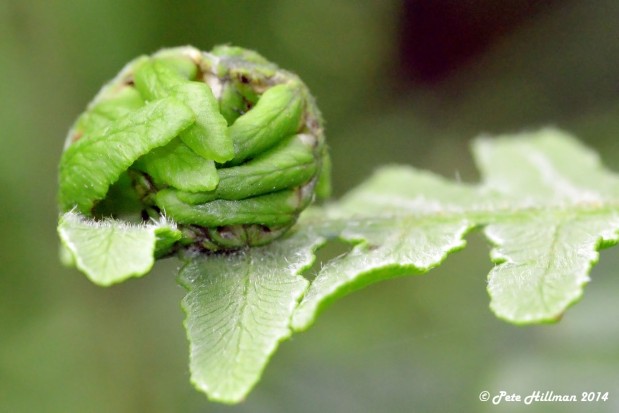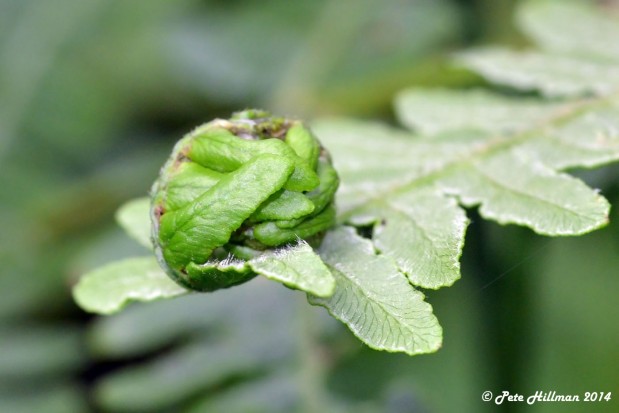This small fist-like ball on the end of this fern frond is caused by a fly called Chirosia grossicauda. The larvae tunnel into the central veins of the pinnules in late summer and cause them to roll downwards from the tip. The solitary white maggot feeds on the main vein by mining. Mature larvae most likely pupate in their galls. Widespread and fairly frequent in Britain.
Photographs of Chirosia grossicauda taken June 2014, local woodland margin, Staffordshire. © Pete Hillman 2014. Camera used Nikon D3200, with Sigma 105mm macro lens.




